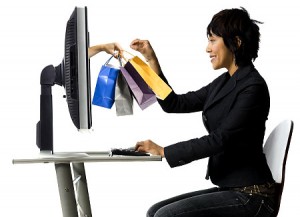C urrently, online sellers are only required by law to collect tax on the states they have a physical presence in. Online only businesses are not required to charge sales tax and consumers who don’t pay sales tax on purchases they make online are supposed to pay that tax to their state. But, that rarely happens. Only 1% of consumers actually follow that law and the rest get away with it.
urrently, online sellers are only required by law to collect tax on the states they have a physical presence in. Online only businesses are not required to charge sales tax and consumers who don’t pay sales tax on purchases they make online are supposed to pay that tax to their state. But, that rarely happens. Only 1% of consumers actually follow that law and the rest get away with it.
Consumers enjoy the concept of buying online to avoid tax and this may be coming to an end soon if the bill for internet sales tax law is passed. Some say, that the bill passing will be an early Christmas for Retailers that have a physical presence. In a survey taken by an advisory firm (Alix Partners), 30% of online shoppers said they would stop shopping online and shop more at retail stores that have a physical location if all online business started taxing. The other half of the people surveyed said the sales tax would not affect their online shopping habits. Management for retailers need to figure out the pros and cons of the sales tax online. Some will be affected while others will not be.
Companies like Amazon were against the online sales tax bill passing at first. After years of opposition, Amazon also is supporting the bill because they are already collecting sales tax in nine of the states where it has warehouses. While Amazon is supporting the bill now, many other online retailers are opposing the bill saying that it would hurt their business and it would be an administrative nightmare because they would have to manage to determine tax rates for different states and locations at checkout. EBay another large online retailer like Amazon, has a slightly different opinion on the tax law. John Donahoe, the CEO of EBay says that if congress does pass the online sales legislation, small businesses with less than 50 employees or less than $10 million in annual out of state sales should be exempt from the sales tax law nationwide. EBay is not completely opposing the legislation, but they are saying that it should have some exemptions to it. Americans for Tax Reform, an anti-tax group also strongly opposed the bill as well as other online retailers.
The law would only apply to online sellers that have at least $1 million in sales and do not have a physical store or warehouse. If the bill is passes it is estimated that more than $12 billion in additional sales taxes will be collected from online purchases each year. The only concern of the bill passing is its affect on online businesses. This could be a possible nightmare for them and really hurt their business. The bill has the full support of retailers including Best Buy, Target, Wal-Mart, and Barnes and Noble because they already are required to charge tax online because they have physical presence in most states.
What could be possible techniques for online business to keep running despite them charging online tax? Do you think that retailers with physical presence will benefit from this bill passing?
http://www.cnbc.com/id/100716012
http://money.cnn.com/2013/05/05/news/internet-sales-tax/index.html








